Lineup Motions in Philadelphia
In many cases involving charges like Robbery, Aggravated Assault, and Burglary, an eyewitness’s ability to make an identification is the key issue in the case. Numerous studies have shown that eyewitness identification testimony, which is often accepted without hesitation by judges and juries as the best kind of evidence, is actually tremendously unreliable and the number one cause of false convictions. In the overwhelming majority of DNA-based exonerations, the defendant was convicted on the basis of a misidentification by an eyewitness or complaining witness who claimed to be absolutely certain that the defendant committed the crime.
Fortunately, courts have increasingly begun to recognize that eyewitness identifications are often mistaken. In most cases, the eyewitnesses truly believe that the defendant committed the crime, but they have made a terrible mistake. This can happen for any number of reasons, including human fallibility and problems with memory as well as undue police influence even where the police mean well. For this reason, the Philadelphia Police Department and other law enforcement agencies have begun to improve their identification procedures. For example, most Philadelphia Detectives now take steps to tell the complainant or eyewitness that the suspect may not be in a photo array, they show photos one at a time so the photo can be compared to memory instead of other photos on the page, and the photo array is conducted by a detective who does not know who the suspect is and therefore cannot subconsciously influence the witness’s identification.
What is a motion for a lineup?
Zak T. Goldstein, Esq. - Philadelphia Criminal Lawyer
In addition to these new procedures, there is a critical motion which can be made by the defense at the preliminary hearing in Philadelphia felony cases. Prior to the preliminary hearing in a case in which there will be some kind of eyewitness identification, the defense attorney may make a motion for a lineup. If the motion is granted, the complainant or eyewitness will be required to attend a lineup at the Curran-Fromhold Correctional Facility and attempt to make an identification of the defendant prior to the preliminary hearing. These pre-trial lineups can be extremely important. If the complainant is unable to make an identification or identifies the wrong person, then the misidentification or failure to ID could have a dramatic impact on the case.
Winning a lineup motion in Philadelphia
Bringing a lineup motion does not require filing anything in writing in the Municipal Court because all motions are made orally. Instead, the defense attorney must inform the judge that the attorney has a motion for a lineup when the case is first called in the morning. If the prosecution agrees that a lineup is appropriate, then the judge will order a lineup and continue the preliminary hearing so that the lineup may occur. This is rare as the prosecution almost always opposes the lineup request due to the delay it causes in the case and the fact that a misidentification could be fatal to the case.
Therefore, once the defense makes the lineup motion, the prosecution will typically provide the Municipal Court judge with a summary of the evidence against the defendant and provide reasons for why the lineup request should be denied. The defense lawyer will then be given the opportunity to respond and argue that a lineup is necessary to protect the defendant (and Commonwealth) from a false identification. In some cases, the judge may want to question the witness about the circumstances of the identification and may allow the attorneys for each side to do so, as well.
The case of Commonwealth v. Sexton suggests some of the main factors that a court should consider in ruling on a lineup request and the remedy for when a lineup request is improperly denied. These factors include:
Do the witness and defendant know each other? Have they seen each other before such that the witness knows what the defendant looks like? This question includes whether some type of identification has already occurred. If the police conducted a “show up” immediately after the incident where the witness was shown and identified the defendant, then the lineup may not be as helpful because the witness already knows what the defendant looks like and believes the defendant committed the crime. Likewise, if the defendant and witness know each other, the lineup will not be particularly useful.
The witness’s opportunity to observe during the incident. This includes factors such as the length of the incident, whether the case involves a cross-racial identification, whether a weapon was involved, how close to each other the witness and suspect were, whether a weapon like a gun was involved, and whether the suspect had anything obscuring his or her face.
Is there other strong evidence against the defendant? For example, if the witness would make a somewhat questionable identification but the defendant is also clearly on video committing a Robbery or Aggravated Assault, then the judge is likely going to find that the delay caused by ordering a lineup is not worth it.
In order to win a lineup motion in Philadelphia, the defense attorney must be able to make a strong argument that based on these factors, the likelihood of a misidentification makes the delay caused by the lineup worth it. For example, Attorney Goldstein recently won a lineup motion in the case of Commonwealth v. R.R. by arguing that a lineup was necessary because the alleged robbery took place in the dark at 2 am, lasted for less than a minute or two, the witnesses and defendants did not know each other, the case involved a cross-racial identification, and a gun was used. Further, there was very little corroborating evidence against the defendants other than the identification. Therefore, the Court granted the lineup motion.
What Is A Lineup?
Once ordered by the Court, the lineup will take place at 5 pm on a weekday at the Curran-Fromhold Correctional Facility on State Road. The defense will be allowed to pick five “fillers” for a lineup of six people, including the defendant. The fillers will typically be inmates at the prison, and the defense attorney must be careful to help the defendant pick fillers who look similar to the defendant. The witness will then be shown the lineup through one-way glass and asked if they identify anyone. The witness’s response will be documented by both the defense attorney, the assigned prosecutor, and a Philadelphia Police Detective.
Will the case get dismissed if the witness fails to pick me out at a lineup?
The prosecution is not required to withdraw the case just because the witness fails to identify the defendant at a lineup. In some cases, they will do so, but in others, they will not. It depends on the strength of the initial identification and whether the prosecution has other evidence. For example, if one witness fails to identify the defendant, but another witness will be able to identify the defendant or the defendant was caught in possession of the proceeds of the burglary, then the prosecution may be able to proceed to trial even without the identification from the witness who failed to pick out the defendant. In other cases, the prosecution will still argue that the initial identification in which the witness picked the defendant out at a show up or out of a photo array was more accurate than the lineup. Each case is different, and whether the prosecution chooses to proceed despite the failure to identify at the lineup will vary depending on all of the circumstances of the case.
Can anything be done if the judge improperly denies the lineup motion or the prosecutor gives incorrect information during argument on the motion for a lineup?
There is a remedy in cases where a lineup should have been ordered but was not, but it is typically not going to be dismissal of the case or suppression of the identification. In cases where the prosecutor in fact made knowingly false representations, it may be possible to successfully move for dismissal of the case or exclusion of the identification. However, in the more common case in which the prosecutor made a mistake or the evidence turned out to be different than expected, the Supreme Court has suggested that the jury should receive a jury instruction. The jury instruction in this type of case directs the jury to consider the identification of the defendant with caution and may inform the jury of some of the potential problems with eyewitness identifications. Most jurors do their best to follow the judge’s jury instructions carefully. This means that jury instructions are extremely important. In a close case, a jury instruction directing the jury to view the identification with caution could be the difference between a conviction and an acquittal.
Award-Winning Philadelphia Criminal Defense Lawyers for Lineup Motions
Philadelphia Criminal Defense Attorneys Zak T. Goldstein, Esq. and Demetra Mehta, Esq.
Lineup motions are most common in Robbery, Burglary, and Assault cases. Our award-winning Philadelphia criminal defense attorneys have successfully represented hundreds, if not thousands, of clients in these serious cases. We have won dozens of lineup motions and taken countless cases to trial before judges and juries throughout Pennsylvania. We offer a free 15-minute criminal defense strategy session to any potential client who is facing criminal charges or may be under investigation. Call 267-225-2545 to speak with one of our experienced, understanding defense attorneys.







